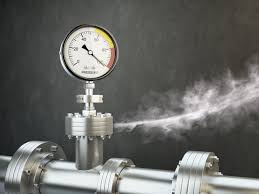Gas leaks can pose serious risks to both property and personal safety, making it essential to know how to respond quickly and effectively. Natural gas and propane, commonly used in homes for heating, cooking, and other purposes, are odorless in their natural state. To help detect leaks, gas companies add a distinctive sulfur-like odor, often compared to the smell of rotten eggs. Being aware of this and other signs of a gas leak, along with knowing what to do in case one occurs, can be lifesaving. This guide will help you understand the key steps to take if you suspect a gas leak and how to prevent potential disasters.
Recognize the Signs of a Gas Leak
The first step in addressing a gas leak is being able to identify one. Several warning signs can alert you to the presence of a leak:
- Distinctive Smell: The most recognizable indicator is the smell of sulfur or rotten eggs. This scent is intentionally added to natural gas to help people detect leaks quickly.
- Hissing or Whistling Sounds: If you hear a hissing or whistling sound near gas lines, this could indicate gas escaping from a pipe or appliance.
- Dead or Discolored Vegetation: Gas leaks can cause plant life near the leak to wither or die. If you notice patches of dead vegetation in your yard, especially near gas lines, this could be a sign of a leak.
- Bubbles in Water: If gas leaks into water, you might see bubbles forming at the surface. This can be a less common but still important sign of a gas leak.
- Physical Symptoms: Exposure to gas can cause dizziness, headaches, nausea, and difficulty breathing. If you or others experience these symptoms, evacuate immediately.
Evacuate Immediately
If you suspect a gas leak, your first priority should be to get yourself and others out of the area as quickly as possible. Leave the building immediately, taking care not to use elevators or anything that could cause a spark, such as lighting matches or turning on electrical appliances. Gas leaks are highly flammable, and even a small spark can trigger a fire or explosion. Once outside, move to a safe distance away from the property and ensure everyone is accounted for.
Avoid Ignition Sources
During a gas leak, any small action that creates heat or sparks could ignite the gas. To prevent this from happening, avoid using anything that could cause a spark:
- Don’t turn on or off any electrical switches or appliances.
- Refrain from lighting matches or using lighters.
- Avoid starting vehicles, as their engines could create ignition.
Even the smallest source of heat or electricity can be enough to trigger an explosion in a gas-rich environment. Be extremely cautious and focus on getting to safety without interacting with any potential ignition sources.
Call for Help
Once you are safely away from the area, call for professional help. Contact your gas provider immediately, or dial emergency services to report the leak. Be ready to provide essential information such as your location, the nature of the suspected leak, and any noticeable signs (like the smell of gas or hissing sounds). The gas provider or emergency responders will guide you on what to do next and will send a team to assess and address the situation.
Ventilate the Area (If Safe)
If it’s safe to do so, and you are still in the process of evacuating, consider opening windows and doors to help ventilate the area and disperse the gas. This can reduce the risk of gas buildup and make the environment safer for when emergency personnel arrive. However, only take this step if you are certain it won’t put you in harm’s way.
Stay Away Until Cleared
Once you’ve reported the gas leak and evacuated the area, remain at a safe distance until emergency responders or gas professionals have arrived and declare the situation safe. Do not re-enter the building until you have explicit clearance from authorities. Even if the smell of gas seems to dissipate, the risk may still be present.
Follow Official Instructions
When emergency personnel arrive, listen carefully to their instructions. They will assess the gas leak, locate the source, and determine the necessary steps to neutralize the hazard. Be sure to follow their guidance and stay out of the area until the situation is fully resolved.
Review Your Emergency Plan
After the incident has been addressed, take the time to review your household’s emergency plan. Make sure all family members know what to do in case of a gas leak and that they are aware of the signs to watch for. You might want to conduct a safety drill to ensure everyone is prepared for potential future emergencies.
Preventing Gas Leaks
While knowing how to respond to a gas leak is crucial, prevention is equally important. Here are a few steps you can take to minimize the risk of leaks:
- Regular Maintenance: Have your gas appliances and lines inspected regularly by a qualified professional to ensure they are in good working condition.
- Install Gas Detectors: Carbon monoxide and gas detectors can provide an extra layer of protection, alerting you to leaks before they become dangerous.
- Know Where Your Gas Shutoff Valve Is: In the event of a leak, knowing how to shut off the gas supply to your home can prevent the situation from worsening.
By being prepared, recognizing the signs of a gas leak, and knowing how to respond, you can help protect yourself, your family, and your property. Gas leaks are serious hazards, but with the right precautions, you can stay safe. For more detailed information on gas safety, DoFollow SGN’s Gas Safety Guide. You can also check our blog https://utility7.com/https-tinyurl-com-gas-appliance-maintenance/ for knowing about gas appliance maintenance.

